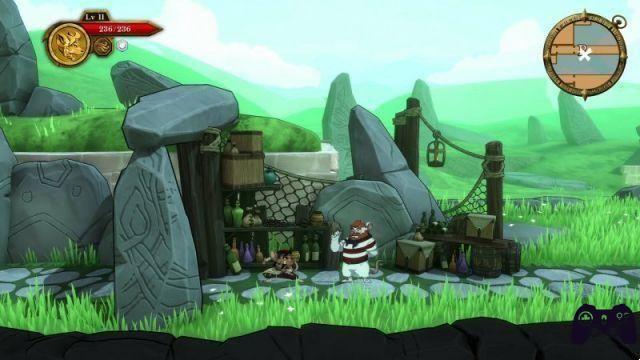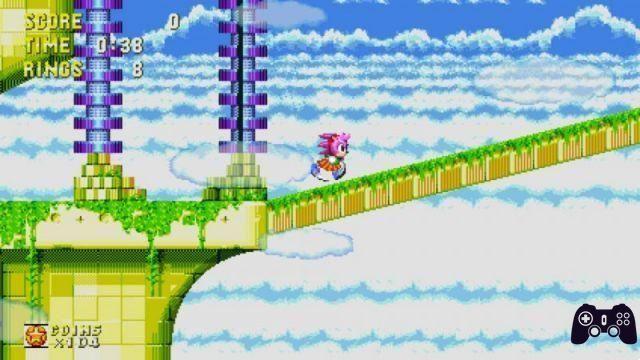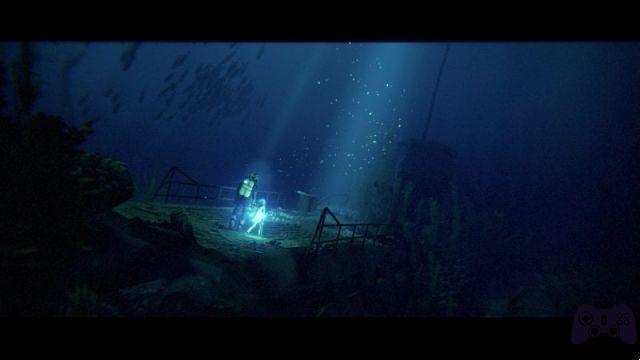When talking about classic video games There is often a logical short circuit, based on biases, which is bad for historical analysis and evaluation. Often those who approach the subject tend to put the past and the present on the same level, evaluating the former in relation to the latter to determine whether a given game has aged well or poorly, as if the alternative of the evening were choosing between playing a game of Baldur's Gate III or Samurai Warrior: The Battles of Usagi Yojimbo (we chose it completely at random, let's be clear), trying to understand which of the two is worth more and if the second still stands up to comparison with the first. This is a superficial approach that industry experts should avoid like the plague, but which instead seems to be increasingly widespread (because discursively it is very easy and very effective on social media, let's face it). Typically, this is also the way in which collections of games from the past are created and evaluated: on the one hand, we look at the nostalgia effect and, on the other, we try to make titles that often belong to other eras and ways of playing seem modern. . . So we have the Capcom Arcade Stadium or the Pac-Man Museum, essentially lots of old titles, even beautiful ones of course, offered in a very colorful and pop package, but without any discussion about it that really helps to contextualize and evaluate them. for what they were.
Then there are Eclipse digital, which manages to take the games it works on and enhance them beyond their recreational content, creating authentic interactive documentaries, to allow the player to understand and appreciate them, bringing them closer to their original essence, without hiding their naivety but, at the same time, on the contrary , exalting precisely that aging that for many represents a defect. This is what happened, for example, with the Atari 50: The Anniversary Celebration collection, which is presented as one of the best historical texts about Atari itself, or with Teenage Mutant Ninja Turtles: The Cowabunga Collection, which perfectly frames the Turtles series. . Without going into further details, for more details on Digital Eclipse, we refer you to our dedicated special. In any case, from these experiences the Gold Master Series was born, that is, a new way of presenting some iconic games to the public, through monographic works structured from the experience acquired with the collections. The first chosen was Karateka and Jordan Mechner, famous for being the author of Prince of Persia, a fundamental title for the industry in more ways than one, to which we owe the birth of the subgenre of action cinematic adventures, which is presented through documents and interviews, as well as Prototypes playables and previous projects of the author. There Reviews of The Creation of the Karateka We will try to understand if this is really the correct way to tell classic video games, although the short answer is yes.
playing karateka

Frankly, nowadays it is not difficult to play Karateka. We are not talking about an obscure title released on unknown systems, but rather a very famous one available on practically all of the most popular platforms of the 80s. Emulating it is really easy, so it wouldn't have made much sense to republish it hoping that nostalgia would do the trick. rest, because its absolute commercial value, if we do not consider the collectors market, is close to zero. . However, The Making of Karateka shows that by treating video games of the past with due respect, they can still have a lot to say and return to the market by focusing the experience on their own interests. historical relevance, net of nostalgia, creating a framework from which it can clearly emerge. So, when testing Digital Eclipse's latest effort, we found ourselves fascinated not so much by the game itself, which we knew inside out, but by the story behind it, which made us look at it from a completely different perspective.
Karateka is obviously important, but it has become the axis of a more complex structure, from which we have learned information that the game alone could not give us. For example, the documentary talks at length about the relationship between Mechner and the original editor, Fraternity, of which the epistolary exchange is shown through the reproduction of the original letters (at that time emails did not exist, at least not outside certain circles), with interviews with members of the same. That Brøderbund that denied him a first game, Deathbounce, present in the collection in the form of prototypes and a remastered version, and gave the young developer a lot of advice on how to transform his ideas into a commercial product, thus highlighting the fundamental role. of the editor in transforming the idea into a finished product (for better or worse).

We learned about the wonderful relationship between Jordan and his father. Francisco Mechner, who not only helped him by composing the Karaketa soundtrack, but also served as a model for some animations and gave him a lot of advice in the creation of the game itself, supporting his son humanly and culturally, even beyond what is commonly expected. feels (for example, he did not object when he saw that his son was more dedicated to developing video games than studying, although he himself was not a gamer). He moved us when Francis, interviewed alongside Jordan in several parts of the documentary, confessed that he had only been interested in video games because they interested his son. Then we became passionate about the materials that show how Karateka animations were created, certainly through the rotoscoping technique, invented in 1918 by Max Fleischer, which consists of tracing the frames of a film to have more realistic and natural animations. . If you think about it, a lot of the information in the documentary was already known, but it's the way it's presented that makes the difference.
additional information
The first commercial version of Karateka was released for the Apple II in 1984. The Commodore 1985 and Atari 64-bit conversions arrived in 8, followed by the NES version. Later there will be conversions for DOS, Atari 7800 and ST, Game Boy, Amstrad CPC, MSX and Zx Spectrum. In 2012, the French publisher Dotemu published Karateka, a modernized version of the original, developed by Liquid Entertainment and supervised by Mechner himself, which had art direction by Jeff Matsuda (The Batman) and a soundtrack written by Christopher Tin ( Civilization IV).
The story of Karateka is very simple: the unnamed protagonist must save Princess Mariko from the castle of the evil Akuma, who has taken her prisoner, overthrowing his guards, avoiding traps and other obstacles.
The humanity behind development

One of the aspects that we liked the most about The Making of Karateka is how it manages to bring out the human dimension behind the game, despite having used the same tools as other Digital Eclipse collections. While Atari 50: The Anniversary Celebration is the rich and complex history of a company, made up of names and situations that extend over a long period of time, Karateka is instead the tiny epic of a boy who passed away in a few years, precisely from 1981 to 1985, from copying his favorite coin game, Asteroids, on which he spent a huge amount of coins, to rejecting a project he believed in, and then creating a revolutionary game, which brought together his love for the medium of video games, for cinema and, sorry if we dare, to which an exceptional family unit also contributed, since in his passion he had the support of practically all of his closest relatives. close ones, including his mother and brother (we have already mentioned the father).

However, it is a historically rich and precise work, in which the different documents are distributed in five time lines that address various moments in the development of the game, ranging from pre-Karateka, to its commercial success, through the design phase, to the ways in which it was disseminated (at that time, the marketing of the video game was not as scientific as it is today, so to speak), by the history of conversions, the most famous of which was that of the C64 carried out by Veda Cook, Mechner's friend and roommate for some time, etc. It's truly the story of a game in the highest possible sense, giving you a deep understanding of it and allowing you to evaluate its impact in its historical context, relative to what the video game industry was like at the time.
The games

In all this there are obviously also games. As mentioned, The Making of Karateka allows you to try the prototypes of early Mechner games, then Deathbounce, Asteroid Blaster and Star Blaster, as well as the evolution of Karateka itself, from the first version created independently by the author, to those reworked after the interventions of the publisher, to three commercial transpositions chosen not by chance: the original for Apple II and the conversions for C64 and Atari 400/800/XL/XE, which represent the "trinity" of the game, that is, the most important and famous versions, whose success allowed it to become an international product, that even reached Japan. (At that time it was not so common for a Western product to touch those shores). There are also two remastered games: Deathbounce, with which Digital Eclipse attempted to give definitive shape to Mechner's original idea, supported by him, and Karateka, in which the original mechanics are brought to a more modern context, so with graphics redone, greater fluidity, more details, etc. There are also elements that had been cut out, whose origin is explained during the documentary, and which as such acquire documentary value.

And it is precisely by replaying Karateka after learning its story that The Making of Karateka produces its best effects, guaranteeing total involvement in the experience even for those who already knew the game. Elements that were previously taken for granted, such as the fixity of Mount Fuji in the background, the origin of the door at the end of the first level, the fact that in the Apple II The music always begins when the characters are still and many others take on a deeper meaning during enjoyment, with the immediate transition from theory to practice ensuring its freshness in the player's memory. It is thus possible to revive the importance that the game had in the development of the video game narrative, of how the narrative techniques used were used, such as the alternating montage between the protagonist and the opponents in the approach phases, which today would not impress to nobody. in reality pure avant-garde and how what we perceive today as limits were actually harbingers of the beauty of the game itself.

So we can still candidly assume the role of the karateka who advances by punching his opponents in linear levels that flow from left to right, using punches and kicks, who avoids the door at the end of the second level to avoid being crushed, and who if he makes a mistake When approaching the princess, the final boss receives a kick in the face that knocks him to the ground, but we are also aware of what all this meant in terms of development and that is why we look at it carefully. Different and somehow new eyes. That is precisely what a documentary should be able to do to be considered successful.
Conclusions
Tested version PC with Windows digital delivery Steam, epic games store, GoG Price 19,50 € Holygamerz.com 9.0 Readers (3) 8.8 your voteThe Making of Karateka is the sum of Digital Eclipse's work carried out over the years to conceive a replicable and attractive interactive documentary model. He manages to elevate his object, revealing even its most hidden sides, but without ever being pedantic. It's about informing and revolutionizing the way the game is played, also adding innovations that further enrich the experience, such as prototypes and remasters. In more general terms, the Digital Eclipse formula seems to be the best to tell the story of video games, intense in its entirety and in the particularity of each title, because it allows it to finally give a dimension to the classics, beyond all possible discussions. born over the years around him.
PRO
- Lots of material to see and read.
- Excellent structuring of the documentary.
- Prototypes, original games, remasters.
AGAINST
- The translation of the lyrics into Spanish is welcome, but there are too many errors.






